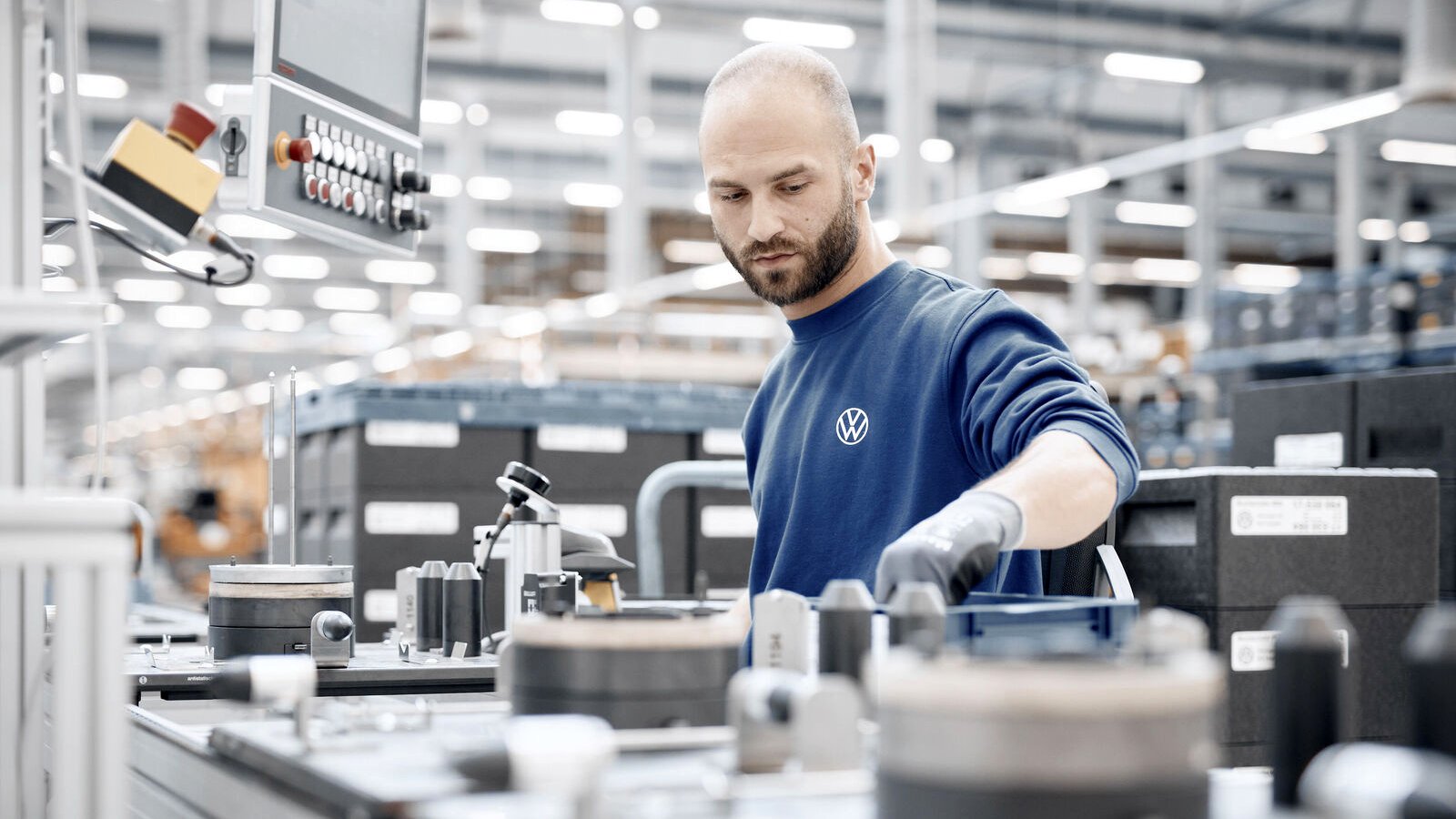Tools & Platforms
2025 AI and Quantum Trends: Green Tech Transforms Industries

Emerging Frontiers in AI and Quantum Computing
As 2025 unfolds, the technology sector is witnessing a seismic shift driven by advancements in artificial intelligence and quantum computing. Industry leaders are increasingly focusing on agentic AI systems, which go beyond traditional models by making autonomous decisions and integrating with technologies like IoT and blockchain. According to a recent analysis from McKinsey, these agentic AI frameworks are poised to transform strategic planning in sectors such as healthcare and finance, enabling real-time efficiencies that could streamline supply chains and enhance decision-making processes.
Quantum computing, meanwhile, is emerging as a game-changer for tackling complex problems that classical computers struggle with. Posts on X from tech enthusiasts and firms like SolidLedger Studio highlight how quantum innovations are integrating with AI to solve optimization challenges in logistics and drug discovery. This convergence is not just theoretical; companies are investing heavily, with Reuters reporting that global tech giants are pouring billions into quantum research to maintain competitive edges.
Sustainability and Green Innovations Take Center Stage
Sustainability is no longer a buzzword but a core imperative, with green technologies leading the charge in 2025. Innovations in bio-based materials and decentralized renewable energy are reshaping manufacturing and energy sectors. A post on X by Sneha S points to the rise of agri-tech and micro-factories, signaling a move toward more localized, eco-friendly production methods. These trends align with broader industry shifts, as noted in WebProNews, where green innovations are transforming industries by integrating with AI for smarter resource management.
Challenges abound, however, including the need for substantial investments in talent and infrastructure. McKinsey’s outlook emphasizes building trust in these technologies to mitigate risks like data privacy concerns in AI-driven systems. Insiders warn that without robust governance, the rapid adoption of quantum and green tech could lead to regulatory hurdles, echoing sentiments in recent TechCrunch articles that discuss antitrust issues facing big tech.
Investment Themes and Economic Implications
Investment strategies are evolving to capitalize on these trends, with a focus on AI infrastructure and digital banking. An X post from Oguz O. outlines key themes, including monetization efforts by cloud giants like Google and Amazon, which are expected to ramp up in 2025. This is corroborated by CNBC’s technology news, which details how firms such as Microsoft are subsidizing AI development to foster ecosystem growth, potentially leading to higher revenues through advanced cloud services.
Economic implications are profound, with startups leveraging AI for personalized services and remote work solutions, as highlighted in an X thread by Keith Tsang. The New York Times’ technology section reports on how these innovations are boosting market shares for pioneers like Tesla in electric vehicles and Amazon in cloud computing, driving faster revenue growth amid digital transformation.
Navigating Challenges in a Rapidly Evolving Sector
Yet, the path forward is fraught with obstacles, including disinformation security and integration sprawls. CriticalRiver’s X post discusses the importance of AI governance and hybrid cloud strategies to address these issues. Fortune’s tech insights warn of macro forces like regulatory pressures and supply chain disruptions that could impede progress, urging executives to prioritize compliance and talent development.
Looking ahead, the integration of spatial computing and ambient intelligence promises to redefine user experiences, per McKinsey’s trends report. As Lux Research’s e-book on 2025 innovations suggests, balancing rising trends like functional health tech with falling ones such as certain carbon capture methods will be crucial for sustained growth. Industry insiders must navigate these dynamics carefully to harness the full potential of 2025’s technological advancements.
Tools & Platforms
“No process without AI” – Volkswagen gears-up €1bn industrial AI drive

Volkswagen will invest €1bn in AI by 2030 to transform vehicle development, production, and IT, targeting €4bn savings, faster innovation cycles, digital sovereignty in Europe, and “AI everywhere” across its industrial value chain.
In sum – what to know:
Billion-dollar AI drive – VW targets “no process without AI” to transform design, production, logistics, and IT.
Bigger industrial gains – 1,200+ AI production apps deployed; €4bn savings and 25% faster production targeted.
Sovereignty and support – push for digital sovereignty in Europe; request for AI-friendly support and regulation.
German automaker Volkswagen Group is to invest €1 billion ($1.17bn) by 2030 in AI-related industrial technologies to boost vehicle development, industrial applications, and IT infrastructure. It made the announcement at the IAA Mobility trade fair in Munich this week, with an AI-rules kind of message about its future Industry 4.0 strategy: “no process without AI”, it said. The firm reckons it will save €4 billion by 2035 from efficiency gains and cost avoidance through “consistent and scalable use of AI” across its entire “value chain”.
Hauke Stars, member of the management board for IT at Volkswagen Group, said: “Wherever we see potential, we utilize AI in a targeted manner. Scalable, responsible, and with clear industrial benefits. Our ambition: AI everywhere, in every process.” The group is working with unnamed technology and industry partners to develop a domain-specific Industry 4.0 language model, a so-called Large Industry Model (LIM), which uses design, production, and sundry automotive process data from participating companies.
It stated: “Collective industrial process knowledge could be used to train an AI model that helps optimize internal workflows and enables more efficient logistics and process control across industries and for all participants.” An organizational blueprint for such an initiative, still in the “exploration” phase, might be the open Catena-X platform for the automotive sector and broader industrial value chain, it suggested. The Catena-X platform is designed to allow secure data exchange between manufacturers, suppliers, and other tech providers.
Volkswagen is a founding member, alongside BMW, BASF, Mercedes-Benz, SAP, Siemens, ZF, and T-Systems. In the end, its total strategy is to make vehicles better, and faster, and AI looks like the answer. Volkswagen claims to have 1,200 AI applications in production already, and “several hundred more” in development or implementation. It has a proprietary “factory cloud”, connecting more than 40 production sites across the group. “Volkswagen is continuously introducing new AI applications into its manufacturing processes,” it said.
Its centralised “factory cloud”, presented as a Digital Production Platform (DPP), is part of its group-wide private cloud infrastructure. This will be “significantly expanded” in the coming years, in line with its digital sovereignty play, and its hard line on resiliency “against external risks and influences”. It stated: “Technological independence and resilience begin with maintaining control over data – and that only works if data is stored, processed, and protected within Europe.” Sustainability, cybersecurity, and knowledge sharing are all part of its smarter production strategy.
In vehicle development, before its vehicles are connected to its “factory cloud” in its manufacturing sites, Volkswagen is working with Dassault Systèmes to build an “AI-powered engineering environment” to help engineers with virtual testing and component simulations across all its brands in all its markets. It wants to reduce its development cycle by around 12 months (25 percent) – to 36 months, “or less”.
But there was a political message in its address at IAA Mobility, as well: it wants support, in exchange for support. It stated: “Volkswagen is committed to actively shaping the future of AI in Europe and supporting political and economic frameworks at both national and European levels. In an increasingly challenging environment – marked by high energy prices, elevated location costs, and administrative complexity – the company sees a clear need to advance technological innovation in AI in Germany and Europe through political support.”
It wants “nnovation-friendly frameworks in the global AI race”, it said. Stars said: “We support the innovation-friendly evolution of European regulation. In addition, targeted incentives are needed: We must make more of what we’re capable of. This includes, above all, funding programs that strengthen spin-offs from universities and research institutions and accelerate the transfer of scientific knowledge into market-ready applications.”
The company has a large-scale internal AI training programme in place, since last year, which has already trained 130,000 staff across all levels, in all its markets. As a footnote, a blog post to go with the news of its AI investment makes AI need humans – in charge of it, and also accepting of it. Hence all the training. It stated: “AI needs rules… That is why we act on the basis of ethical standards and European regulation. When it comes to sensitive personnel issues, for example, a human being will make the final decision. Always. The key to the success of AI is acceptance.”
Stars said: “With AI, we are igniting the next stage on our path to becoming the global automotive tech driver. AI is our key to greater speed, quality, and competitiveness – across the entire value chain, from vehicle development to production. Our ambition is to accelerate our development of attractive, innovative vehicles and bring them to our customers faster than ever before. To achieve this, we deploy AI with purpose: scalable, responsible, and with clear industrial benefits. Our ambition: no process without AI.”
Tools & Platforms
Building a solid foundation to support AI adoption at Bentley

On determination: Years ago, there was a program called Tomorrow’s World, and it was all about the future and what that could look like. I was fascinated by it because in one episode, there was a woman presenter. So that inspired me then, and showed you could aspire to that. I went into my first role working in a software development division in the mid-90s where everyone was frantically recoding everything because of Y2K. Those were my very early days in technology. But even then, I had female role models who made it seem accessible. I was curious but not very academic at school, so I felt lucky to get a job in technology. Being able to learn coding was very interesting, and I found my routine, and continued to grow and move through the ranks.
On data: I always say there’s no AI without data. So the thing we’ve been working on for the last two years is the data strategy, understanding the governance, the framework, and everything else we need there as foundations. We’ve done a lot of work around data literacy and upskilling in the organization, and we’ve been doing that in preparedness for AI because we know everybody wants it, and they want it now, but they don’t necessarily know what they want it for. So it’s about creating that safe space where people can test and learn. I’ve been working in partnership with the chief strategy officer to say this needs to be a joint business, and we need an IT strategy around data and AI. It can’t just be directly from it. We need to work together with the business to understand what we want to use AI for so we can get to value sooner. And if you think about what we’ve been doing for the last three years in moving to the enterprise systems, reducing the systems landscape, and making sure we understand what data we’ve got in those systems, it’s all been creating the pathway and the foundation levels we need to get us there sooner.
On streamlining efficiencies: When I came into automotive, it was essentially learning a whole different language because many of the abbreviations are tied to German words. So even when you know them, you don’t understand what they mean. For me, it was about taking that big step back, looking at our business and saying we’re all about designing and creating an amazing product. We then have customers we service through the web or the app. So it’s broken down into value streams, and within those are the processes of designing, building, marketing, and selling cars. I like logic, so I try to apply it when we examine capabilities, like reducing cost of delivery from an IT perspective. That gives us more money to invest in other things, or future ready our organization.
Tools & Platforms
AI Companions Revolutionize Elder Care, Battling Loneliness Worldwide

The Rise of AI in Elder Care
In an era where technology increasingly intersects with human well-being, artificial intelligence is emerging as a pivotal tool in addressing one of the most pressing challenges facing the elderly: loneliness. Senior living facilities across the United States are turning to AI-powered companions to provide emotional support and social interaction for residents who often feel isolated. These digital aides, ranging from voice-activated chatbots to robotic pets, are designed to engage users in meaningful conversations, remind them of daily tasks, and even monitor health metrics, all while offering a semblance of companionship without the need for constant human intervention.
Recent implementations highlight the potential of these technologies. For instance, a program in a Bronx senior living facility, as reported by CBS New York, has introduced AI companions that deliver empathy and conversation, helping residents combat feelings of solitude. Similarly, initiatives in states like New York and Pennsylvania have distributed robotic pets to isolated seniors, providing comfort and reducing loneliness, according to coverage from CNN posts on X.
Low-Tech Approaches Yield High Impact
Contrary to assumptions that cutting-edge AI requires sophisticated hardware, many effective solutions are surprisingly low-tech. A notable example comes from McKnight’s Senior Living, which details how simple voice-based AI companions are being deployed in senior residences. These systems operate via basic phone calls or smart speakers, engaging residents in casual chats about weather, news, or personal stories, thereby fostering a sense of connection without overwhelming users with complex interfaces.
This approach is particularly beneficial for seniors who may be intimidated by high-tech gadgets. Research from a systematic review published in PMC underscores the effectiveness of such AI applications in reducing loneliness among older adults, noting improvements in quality of life and mental health outcomes through regular, empathetic interactions.
Global Innovations and Local Adaptations
Beyond the U.S., international efforts are pushing boundaries. In South Korea, ChatGPT-powered Hyodol robots are assisting caregivers by providing companionship to seniors, as highlighted in a recent article from Rest of World. These robots not only converse but also help with medication reminders and vital sign monitoring, alleviating the burden on human staff in overburdened facilities.
Domestically, companies like ElliQ are leading the charge with AI care companion robots that promote independence and healthy living. According to their own site at ElliQ, these devices facilitate entertainment, family connections, and wellness goal tracking, proving especially valuable in combating isolation. Posts on X from users like Dynamic emphasize how such AI companions are tailored for elderly interactions, incorporating patience and generational knowledge to build rapport.
Challenges and Ethical Considerations
Despite the promise, integrating AI into elder care isn’t without hurdles. Concerns about dependency and the potential for these companions to exacerbate rather than alleviate loneliness have surfaced. A piece in WebProNews warns that romantic AI companions might foster unhealthy attachments, leading to lower self-esteem and anxiety among users who withdraw from real-world connections.
Privacy issues also loom large, with data collection for health monitoring raising ethical questions. Industry insiders, as discussed in a Forbes article, stress the need for robust safeguards to protect vulnerable seniors from exploitation while scaling support through predictive AI tools.
Future Prospects and Industry Shifts
Looking ahead, the integration of AI in senior living is poised for expansion. Innovations like the Joy Calls service from ONSCREEN, detailed in a PR Newswire release, offer free phone-based AI companionship to combat isolation in Southern California. This model could inspire widespread adoption, especially as staffing shortages persist in care facilities.
Experts predict that embodied AI, such as robots with physical presence, will become more prevalent, as noted in X discussions from susano. Combined with advancements in voice recognition and behavioral monitoring, these technologies could detect early signs of cognitive decline, as explored in posts by Joel Selanikio on X, potentially revolutionizing proactive care.
Balancing Technology with Human Touch
Ultimately, while AI companions offer scalable solutions, they are most effective when complementing, not replacing, human interaction. A WHYY segment points out that about one in four older adults report social isolation, and AI robots are helping, but experts caution against over-reliance. Programs encouraging real-life connections, like AI meet-up apps described in The Sun, bridge the gap by facilitating in-person events.
As the industry evolves, stakeholders must prioritize ethical deployment to ensure AI enhances rather than diminishes the human experience in elder care. With ongoing innovations, these digital allies could significantly improve the lives of millions, turning the tide against loneliness in an aging population.
-

 Business2 weeks ago
Business2 weeks agoThe Guardian view on Trump and the Fed: independence is no substitute for accountability | Editorial
-
Tools & Platforms4 weeks ago
Building Trust in Military AI Starts with Opening the Black Box – War on the Rocks
-

 Ethics & Policy1 month ago
Ethics & Policy1 month agoSDAIA Supports Saudi Arabia’s Leadership in Shaping Global AI Ethics, Policy, and Research – وكالة الأنباء السعودية
-

 Events & Conferences4 months ago
Events & Conferences4 months agoJourney to 1000 models: Scaling Instagram’s recommendation system
-

 Jobs & Careers2 months ago
Jobs & Careers2 months agoMumbai-based Perplexity Alternative Has 60k+ Users Without Funding
-

 Education2 months ago
Education2 months agoVEX Robotics launches AI-powered classroom robotics system
-

 Podcasts & Talks2 months ago
Podcasts & Talks2 months agoHappy 4th of July! 🎆 Made with Veo 3 in Gemini
-

 Education2 months ago
Education2 months agoMacron says UK and France have duty to tackle illegal migration ‘with humanity, solidarity and firmness’ – UK politics live | Politics
-

 Funding & Business2 months ago
Funding & Business2 months agoKayak and Expedia race to build AI travel agents that turn social posts into itineraries
-

 Podcasts & Talks2 months ago
Podcasts & Talks2 months agoOpenAI 🤝 @teamganassi





